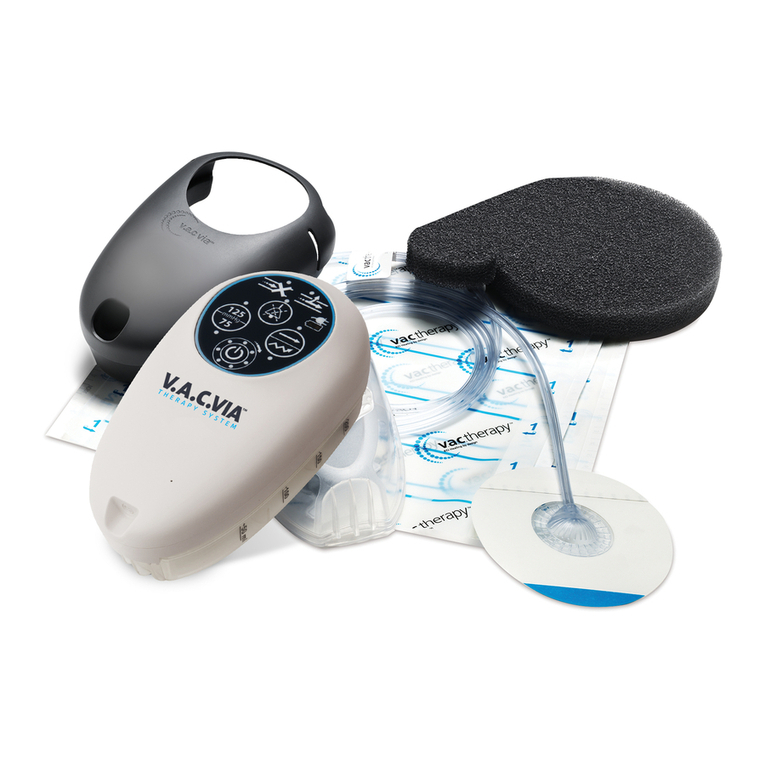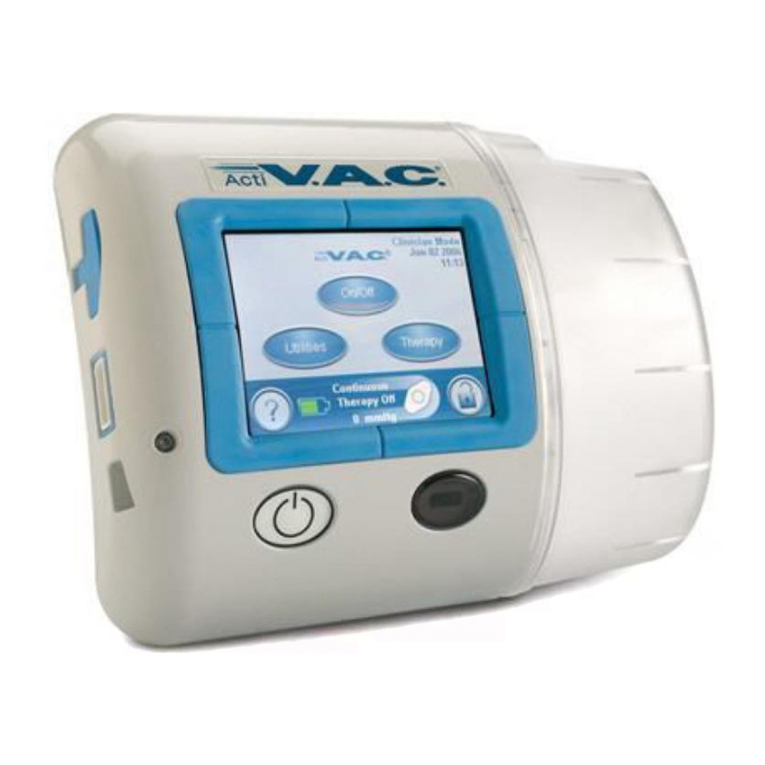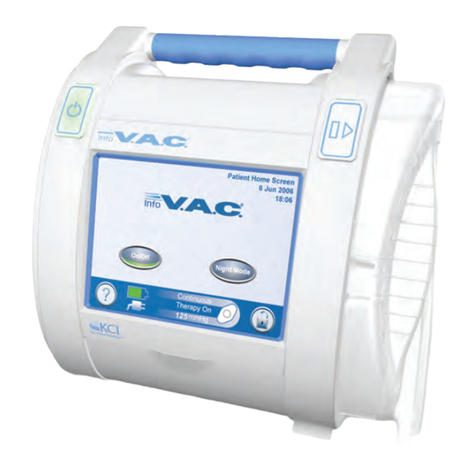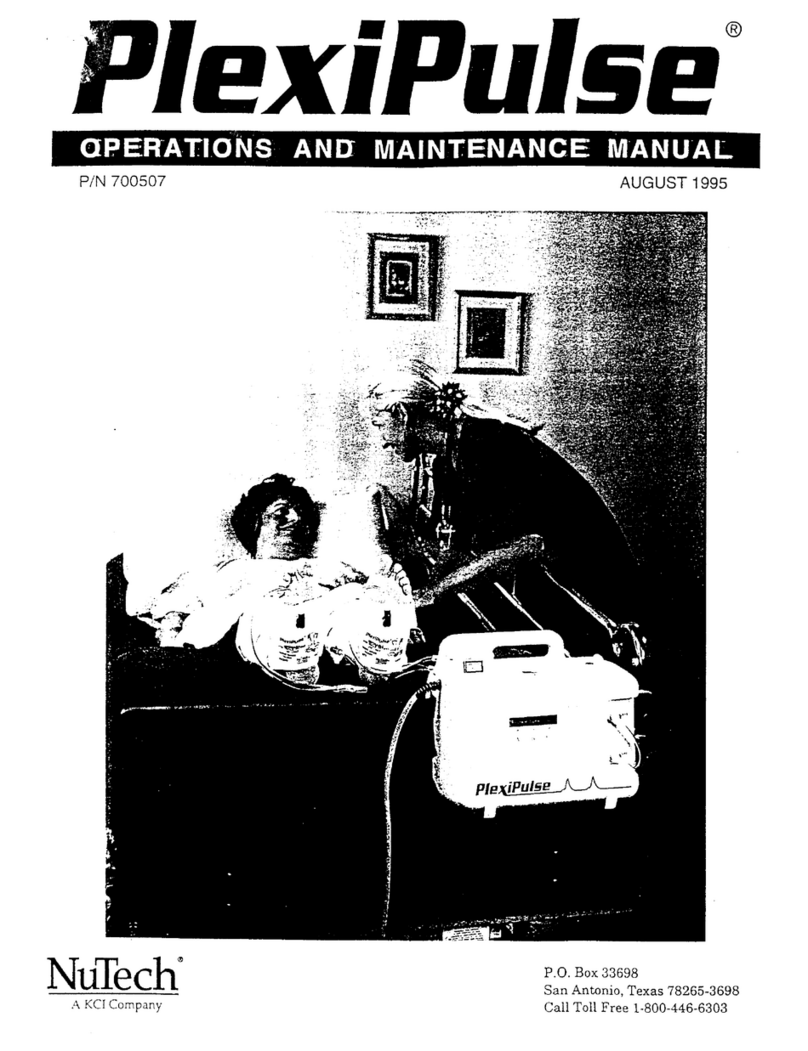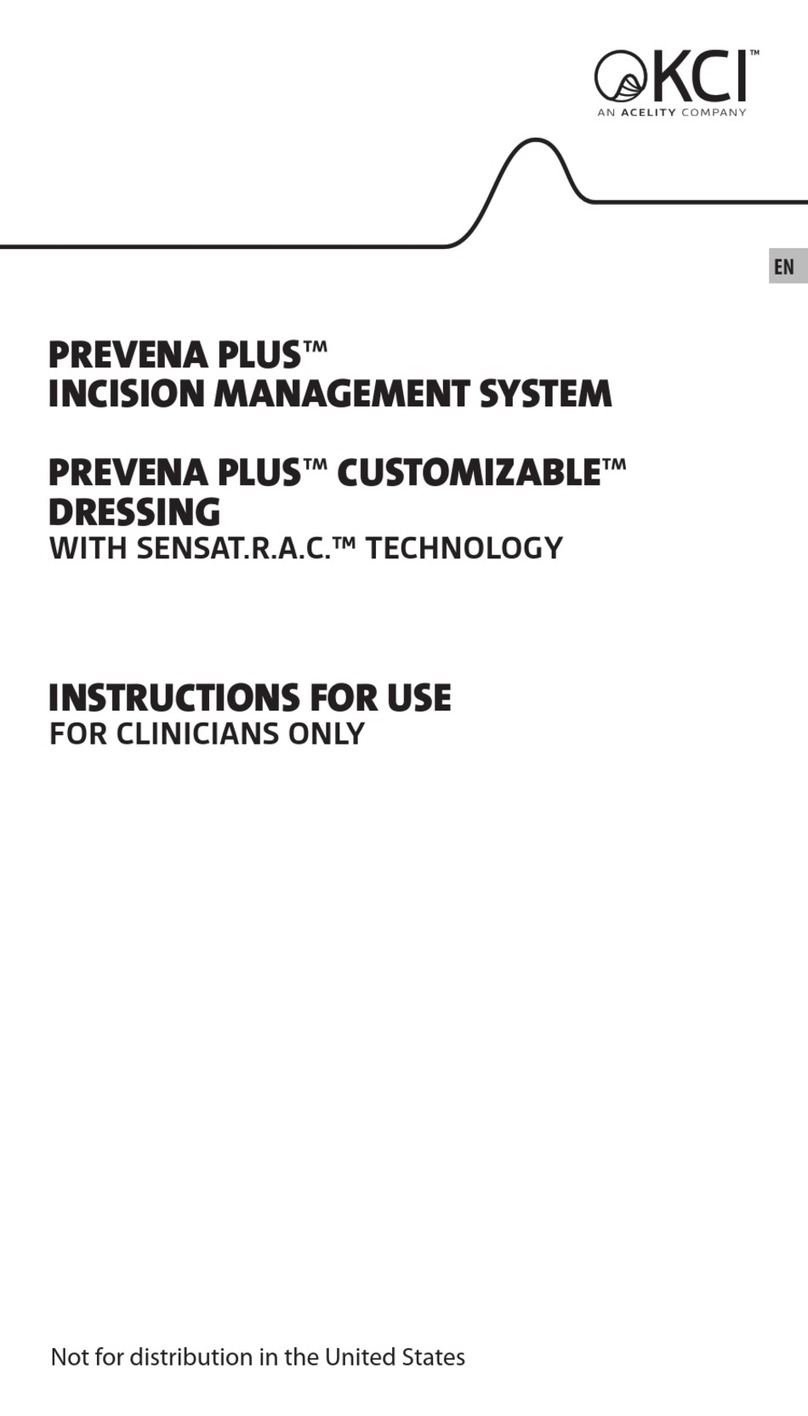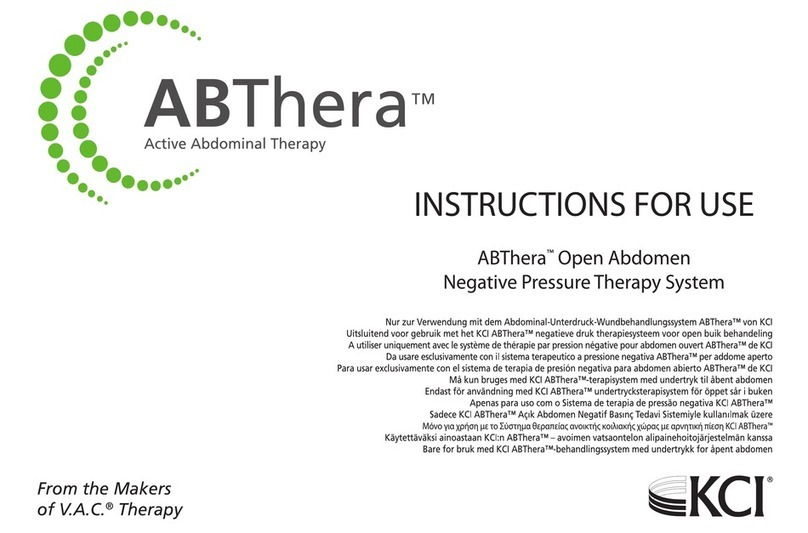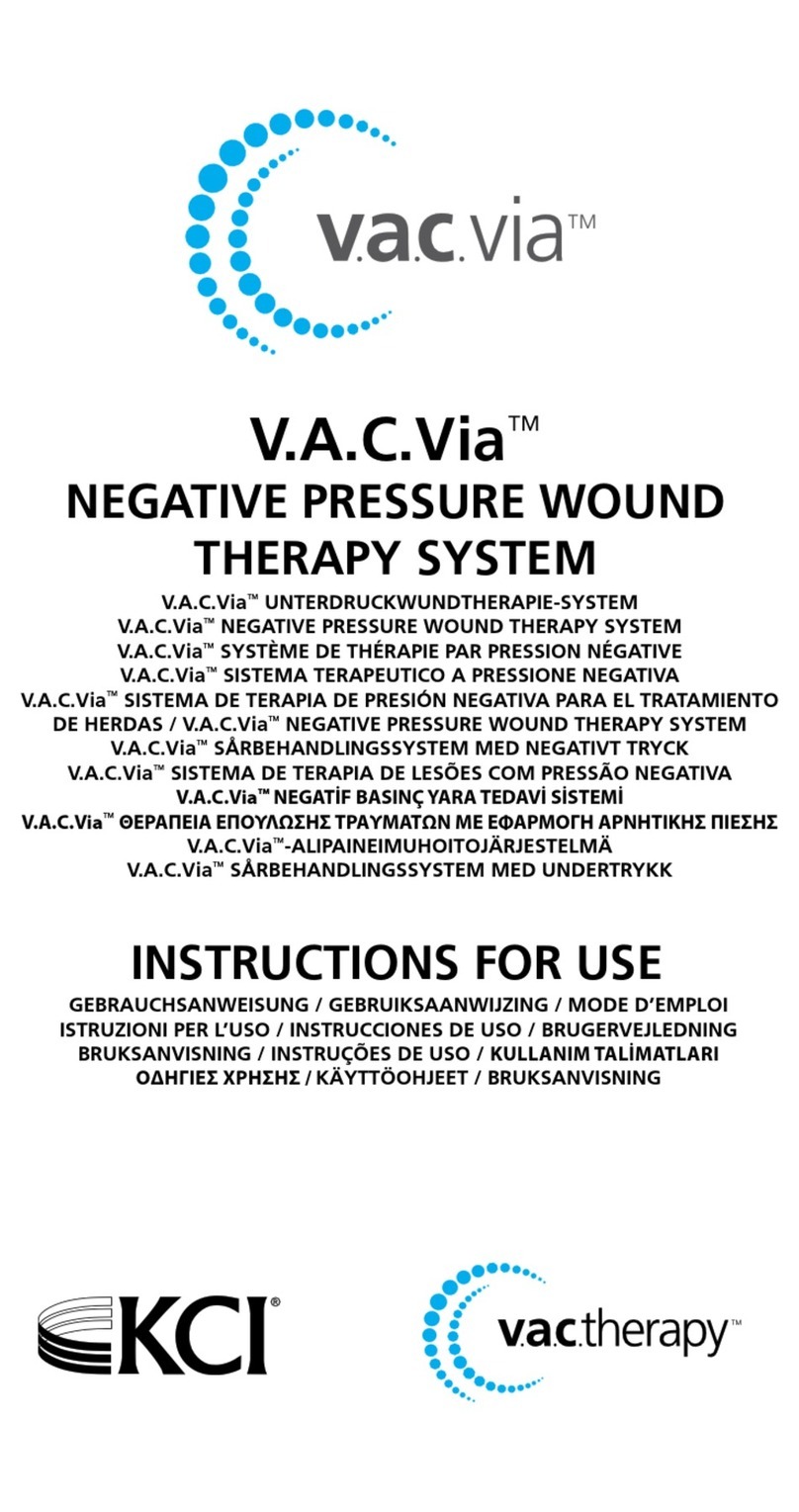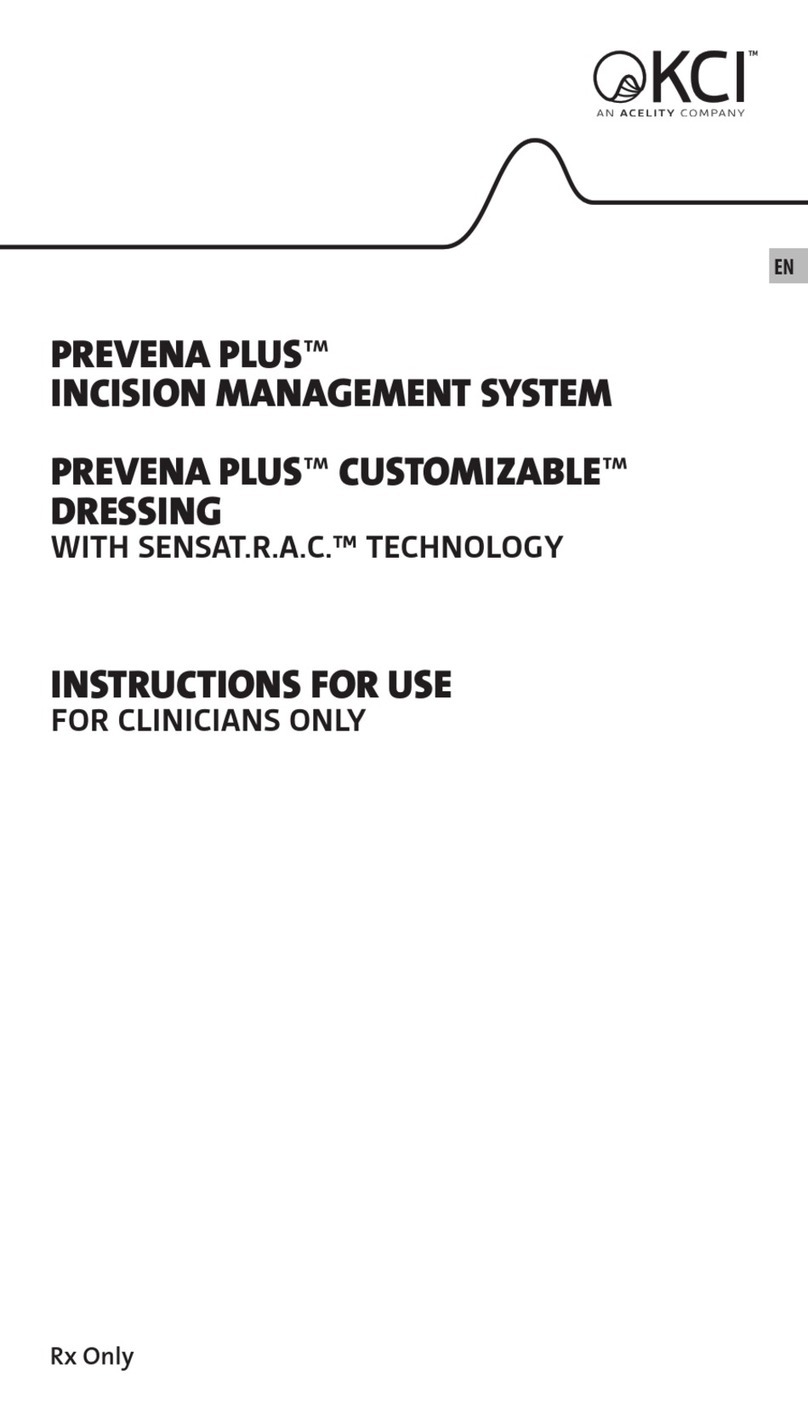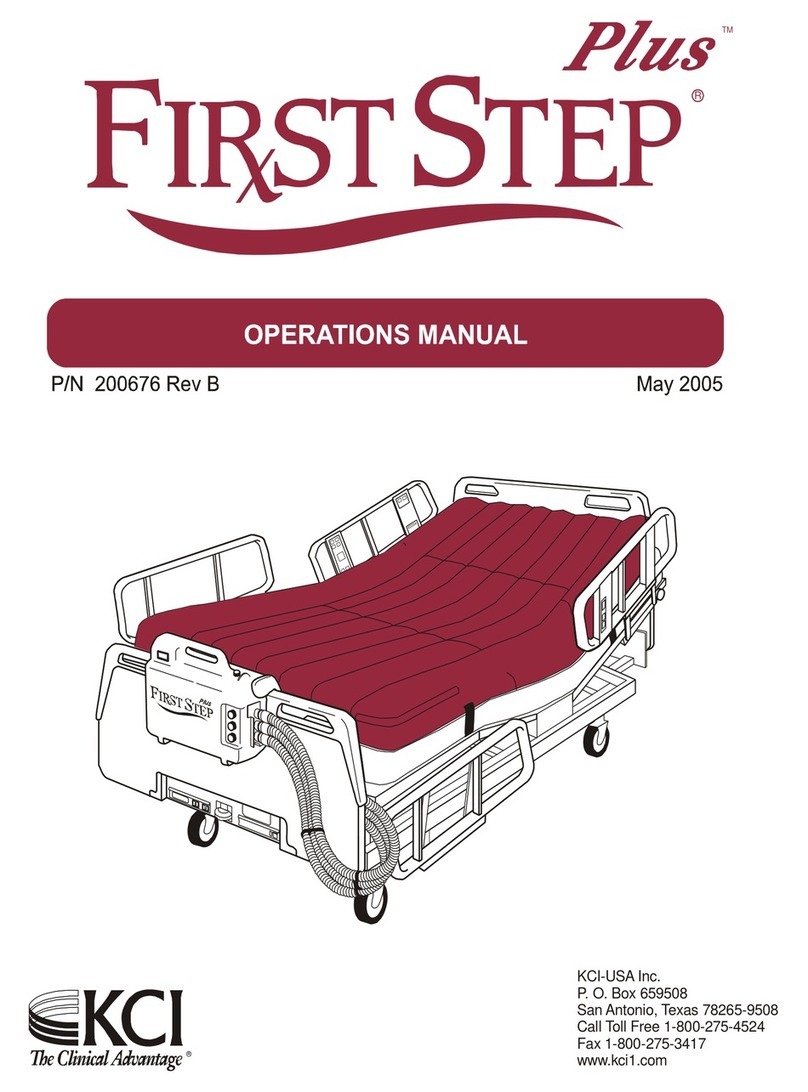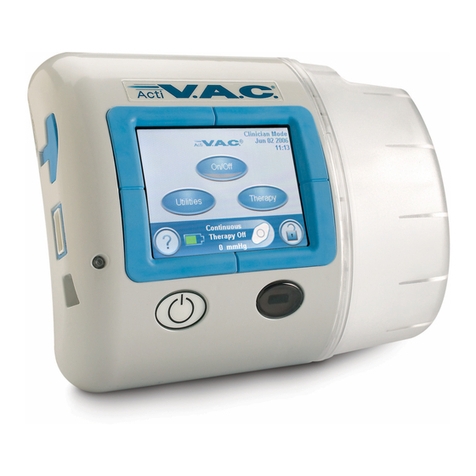
V.A.C.ATS Operations and Maintenance Manual
2
KEEP THERAPY ON
Never leave sub atmospheric pressure off for more than 2 hours per day. Remove
V.A.C.®dressing if subatmospheric pressure is terminated or is off for more than 2 hours per day.
DRESSING CHANGES
Perform aggressive wound cleaning per physician order prior to dressing application. Routine
dressing changes should occur every 48 hours. Dressing changes for infected wounds
should be accomplished every 12–24 hours. Always replace with sterile V.A.C. disposables
from unopened packages. Follow established institution protocols regarding clean versus
sterile technique.
Note: All components of The V.A.C. System are packaged sterile. The decision to use clean
versus sterile/aseptic technique is dependent upon wound pathophysiology and
physician/clinician preference. All V.A.C. Therapy disposables (including the foam, canister,
tubing and drape)are latex free.
MONITORING THE WOUND
Inspect the dressing frequently to ensure foam is collapsed and negative pressure is being
delivered in a consistent manner. Monitor periwound tissue and exudate for signs of
infection* or other complications. Extra care and attention should be given if there are any
signs of possible infection or related complications. Infection can be serious. With or without
V.A.C. Therapy, infection can lead to many adverse complications including pain, discomfort,
fever, gangrene, toxic shock, septic shock and various other complications.
IF DRESSING ADHERES TO WOUND
Instill normal saline into the dressing and let it set for 15–30 minutes, then gently remove the
dressing from the wound. Consider placing a single-layer, wide-meshed, non-adherent
dressing prior to foam placement.
DISCOMFORT
If patient complains of discomfort throughout therapy, consider changing to white PVA Versa
Foam™ dressings.If patient complains of discomfort during the dressing change, consider
pre-medication, use of a non-adherent prior to foam placement or instillation of a topical
anesthetic agent such as 1% lidocaine without epinephrine prior to dressing removal.
UNSTABLE STRUCTURES
Over unstable body structures such as unstable chest wall or non-intact fascia, use
continuous (not intermittent) therapy to minimize movement and stabilize the wound bed.
SPINAL CORD INJURY
In the event a patient experiences autonomic hyperreflexia (sudden elevation in blood
pressure or heart rate in response to stimulation of the sympathetic nervous system)
discontinue V.A.C. Therapy to help minimize sensory stimulation.
BODY CAVITY WOUNDS
Underlying structures must be covered by natural tissues or synthetic materials that form a
complete barrier between the underlying structures and the V.A.C. foam dressing.
V.A.C. DISPOSABLES
The V.A.C.®ATS therapy unit is to be used exclusively with V.A.C.®disposables.
WARNING: Do not pack the foam into any areas of the wound. Forcing foam
dressings in a compressed manner into any wound is contrary to KCI
recommendations.
*Signs of possible infection may include fever, tenderness, redness, swelling, itching, rash, increased warmth in the wound area,
purulent discharge or a strong odor. Nausea, vomiting, diarrhea, headache, sore throat with swelling of the mucous membrane,
disorientation, high fever (>102F, 38.8 C), refractory hypotension, orthostatic hypotension, or erythroderma (a sunburn-like rash)
may be added signs of more serious complications of infection.
V.A.C.® THERAPY CARE AND SAFETY TIPS

